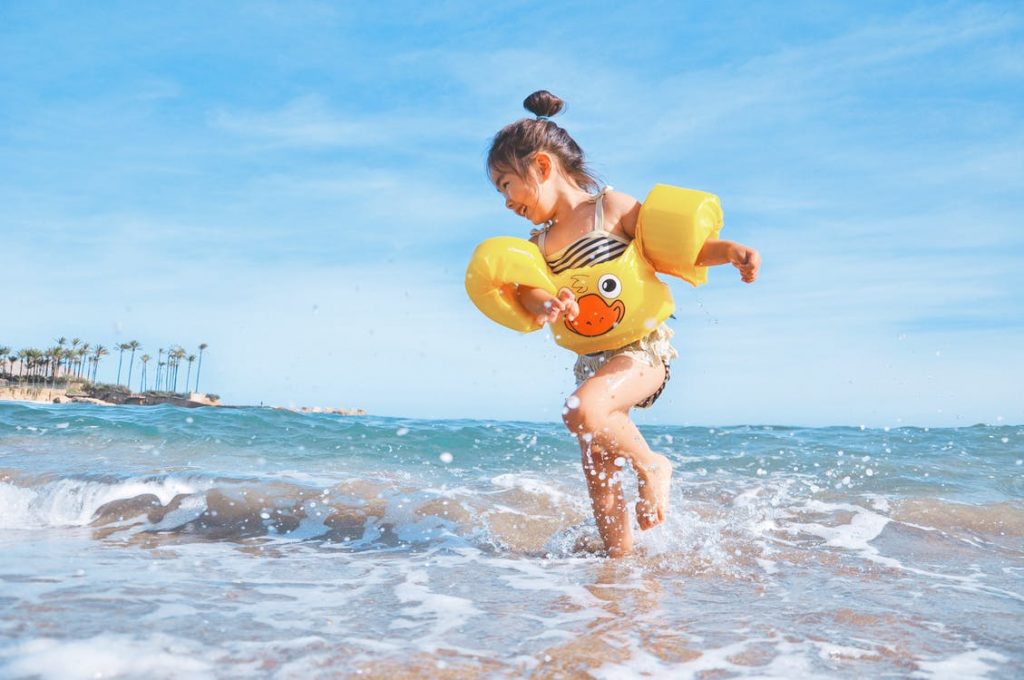Written By: Stefanie Chimienti and Courtney Stewart, Summer Student
With summer in full swing and with temperatures beginning to hit their peak, Canadians are spending much more time outdoors. There are many great activities which pull us out into the sun’s warm rays, but it is important to be aware of the dangers of sun exposure and learn how to safely enjoy the sun and warm weather.
Dangers of the Sun and Heat
Sunburns can occur within 15 minutes of being exposed to the sun even though the typical redness may not appear for a few hours. Regular sunburns can be painful, and extreme sunburns, sometimes called sun poisoning, can induce fever, chills, nausea and rashes. A sunburn can even cause second and third-degree burns.
Serious effects of unprotected sun exposure include skin and eye damage, premature aging of the skin, a weakened immune system, moles, and skin cancer. Skin cancer usually appears in adults, but can be caused by excessive sun exposure and sunburns throughout a person’s life.
Heat illness and heat stroke occur most often during heat waves when temperatures reach extreme levels. Symptoms of heat illness include:
- Dizziness or fainting
- Nausea or vomiting
- Headache
- Rapid breathing
- Rapid heartbeat
- Extreme thirst
- Muscle weakness or cramping
- Behavioural changes such as confusion, disorientation, or staggering
On hot, sunny days be cautious of hot surfaces, such as metals that have been exposed to the sun for long periods of time. Small enclosed spaces, such as cars, can also be dangerous as they heat up very quickly in the sun.
Those who are most at risk for sun and heat related issues are older adults, infants, young children, people with chronic illnesses, people who work or exercise outside, homeless people, and low-income earners.
After Sun Care for Sunburns or Heat Illness
If you or a loved one gets a sunburn, you should protect the sunburnt area from further exposure and drink extra fluids. You can also take a cool shower or bath, apply aloe vera gel, or take ibuprofen or acetaminophen, as directed, to ease any pain.
If someone who has been out in the sun starts exhibiting symptoms of heat illness or has a sunburn that is extremely painful, forms blisters or becomes infected, seek medical attention from either the emergency room or your family doctor depending on the severity of the situation.
Prevention – How to Safely Enjoy the Sun:
Check the UV index daily
- When the UV index reaches 3 (moderate) take extra care to follow the sun safety tips below.
Sunscreen
- Buy and use the right kind of sunscreen:
- Use a sunscreen with an SPF of at least 30.
- Use a sunscreen that says “broad-spectrum” on the label to ensure that it will protect you from both UVA and UVB rays.
- Use a “water resistant” sunscreen.
- Apply and reapply:
- Apply sunscreen 20 minutes before sun exposure and again 20 minutes after sun exposure.
- Remember to protect your ears, nose, neck, any bald spots, the backs of your hands, tops of your feet and the backs of your knees.
- Apply sunscreen before makeup or insect appellant.
- Reapply sunscreen often, every 1-2 hours, especially if sweating or swimming.
- Use a lip balm with a SPF to protect your lips.
- Make sure your sunscreen is not expired.
- Do not put sunscreen on babies less than 6 months old.
Minimize sun exposure between 10 a.m. and 4 p.m.
- When your shadow is shorter than you, the sun is very strong and you should minimize your sun exposure.
- If you are outside, try to find shadier spots – look for parks with big trees, partial roofs, awnings, umbrellas, or gazebo tents.
- Always take an umbrella to the beach.
- If you can see the sun from your shady spot you still need to cover up with other measures such as clothing.
Wear protective clothing
- Wear light-colours.
- Wear loose-fitting, long-sleeved shirts and long pants made from tightly woven fabric.
- Some clothing offers specific protection from UV rays – check the labels for a UPF (UV protection factor) of 15 or higher.
Accessorize!
- Hats help protect and shade the face, head, ears and neck.
- Chose a hat with a wide brim that encircles your head.
- Hats such as baseball hats will not provide as much protection.
- Sunglasses can protect your eyes from both UVA and UVB rays – be sure to buy sunglasses which state they protect your eyes from both.
- Choose sunglasses with dark lenses that will not reduce or distort your vision.
- Consider dark lenses with a grey, brown or green tint if you spend a lot of time outside.
Stay hydrated
- Keep liquids, preferably water, around and available at all times.
- Don’t wait until you’re thirsty to drink – drink water regularly.
- Encourage children and seniors to drink water.
- Eat more fruits and vegetables as they have high water content.
- Drink water before, during and after physical activities.
The Government of Canada and the Canadian Cancer Society offer further excellent information on sun safety. For elaboration on any of the topics in this blog, please visit their websites.






